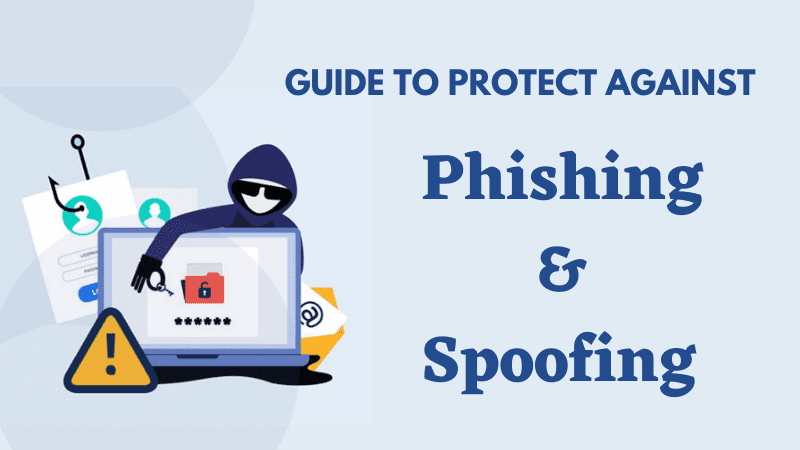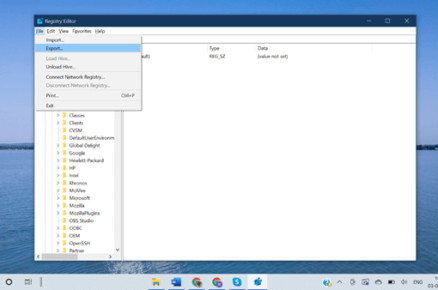The first step to staying secure from phishing and spoofing attacks is to protect yourself from scammers. There are several IP addresses that you need to know in order to prevent big scams and one of them is 192.168.1.7. There are several ways to prevent your email from becoming a victim of phishing. For example, you should make sure your email address is validated through SPF or DMARC. DMARC is an email authentication protocol, and it ensures that you are not redirected to a malicious website.
Table of Contents
Deepfakes
In 2022, you’ll need to take a number of steps to stay secure from phishing and spoofing attacks. This is because spoofing attacks come in many forms and aim to deceive their victims. This is because spoofed messages can contain harmful content and cause a breach in security. Phishing attacks also happen when hackers get access to your system. So, to stay safe, you’ll need to exercise extreme caution whenever you interact with unidentified parties. By learning how to detect spoofed communications, you’ll be able to better defend yourself against phishing and other spoofing attacks.
The goal of a spoofing attack is to steal sensitive information from you, either for malicious or financial gain. When you’re asked to provide sensitive information to a phishing website, you must exercise caution and ensure the source is legitimate. If the email is from an unfamiliar source, it’s likely to be a spoof. You’ll probably find examples of spoofing in your “Junk” folder, and you should never click on the link in an unsolicited message.
IP spoofing
While you may not be able to prevent every attack on your network, there are a few ways to stay secure from IP spoofing and espionage in 2022. Among these methods are encryption, network monitoring, and a good firewall. To learn more about how to stay secure from IP spoofing and phishing, read the following articles and watch this video.
While IP spoofing is not as dangerous as it sounds, it does have its uses. IP spoofing is a method of making a user’s IP appear real while attempting to access an unsecured network. By presenting themselves as the owner of a particular IP, a hacker can gain the trust of other users in a network and obtain sensitive information.
Social engineering
In recent years, brand impersonation and deepfakes have become serious threats for businesses. While brand impersonation may be the oldest trick in the book, it has become a go-to for cybercriminals. Because employees approach trusted brands with a higher level of trust, cybercriminals can leverage this to sneak malicious messages past your defenses. The technology behind these attacks has advanced dramatically, resulting in a new level of risk.
One of the best ways to protect yourself from spoofing is to use two-factor authentication, which requires you to provide a second piece of information, such as a USB token or biometrics. Secure browsers are another option to prevent phishing attacks. In addition to secure browsers, antivirus software also offers safe browsing tools. Using a good password manager is also crucial.
DMARC protocol
The State of Email Security 2022 report from Mimecast warns that spoofing attacks are increasing and that organizations must take extra precautions to secure their emails. This study found that most organizations are doing the right things to secure their emails, but should be doing more. Without DMARC, they are leaving themselves vulnerable to spoofing attacks. DMARC authentication helps domain owners identify unauthorized email senders and valid ones.
DMARC is an open email authentication protocol that aims to protect against phishing and spoofing attacks. It works in conjunction with Sender Policy Framework and Domain Keys Identified Mail to prevent malicious emails and ensure that emails from reputable sources are legitimate. In the future, it could even improve a company’s reputation and increase deliverability.
Training employees to detect phishing attacks
It is essential for businesses to train their employees on how to identify phishing attacks. This training should be conducted regularly, so that employees know what to look out for and how to report an attack. In addition to email phishing, other forms of phishing are becoming increasingly prevalent. One such example is the increasing use of USB devices as portable storage. USB devices can contain malware. Training employees to spot and report these phishing attacks is crucial for protecting your company’s information.
Even the best-trained employees can be duped by phishing emails. Even if they are adamant that they are not receiving these emails, they are likely to click on the link in the email, believing it is from a legitimate business. Since human error is a contributing factor in 25 percent of data breaches, phishing is likely to continue to be one of the top cyberattack vectors. Therefore, companies need to implement phishing awareness training.





